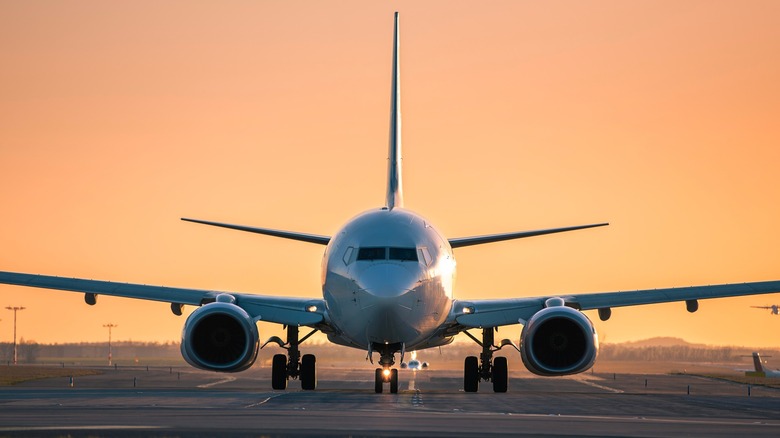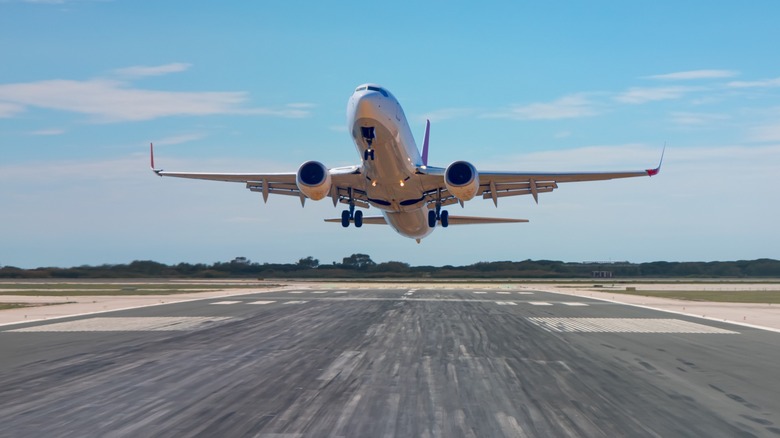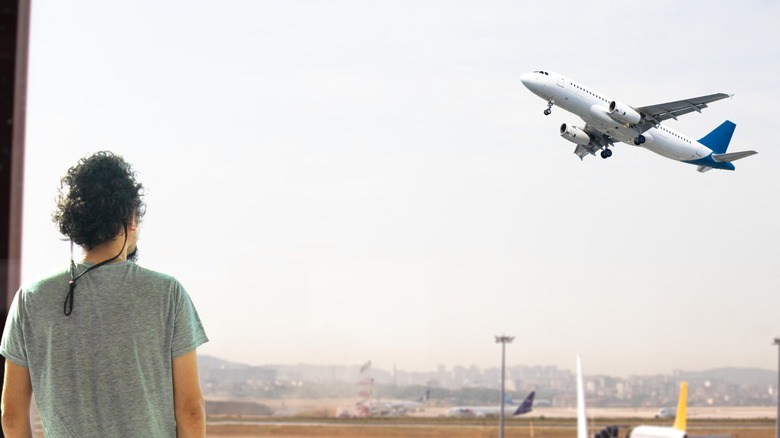Why Do Planes Do Touch And Go Landings?
When a plane touches down and immediately soars back up, it might look odd. After all, planes are supposed to land, taxi, and unload passengers. You don't expect them to bounce off the runway like it's a trampoline. You might have even wondered whether the pilot changed their mind about landing at the last second. Not quite. That fast-paced landing immediately turned into a takeoff is called a touch and go, and it's usually completely intentional.
Touch and go is a maneuver where a plane lands briefly, then takes off again in one fluid motion. Aircraft are no stranger to odd occurrences during and after landing. For instance, you might have wondered why planes dim their lights before landing. You might also have noticed that planes sometimes dump fuel before landing. Despite these, the touch and go still stands out as bizarre, especially if you do not know the reason for it. With that said, let's dive into why the runway bounce isn't just showmanship. Here's why planes do the touch and go landings.
Training wheels in the sky
One common reason you might see a plane do a touch and go landing is as a training exercise. Touch and gos are flight school fuel. A student pilot approaches the runway, flares, touches down, and instantly lifts into the climb before coming to a stop to repeat the cycle. This combination of landing and takeoff mashed in one maneuver can be done repeatedly. Sometimes six, seven, or even eight cycles in an hour.
Like many skill training exercises, that cycle helps build the muscle memory behind key piloting tasks. They bolster skills that are essential for safe landings. Skills such as tight traffic‑pattern work, crosswind handling, as well as pitch and power changes. It also helps them understand and perfect the act of flaring an aircraft when landing. The exercises further aid students in learning to multitask under pressure. They touch down, reconfigure flaps, open throttle, and lift off, all while rolling on the runway. Not to mention, how time efficient it is too, as there is no need to taxi back to the pattern.
Not just for rookies, pros bounce too
Touch and gos aren't reserved for trainees alone. They are just as effective strategic tools for seasoned aviators as well. They might do these for check rides, crosswind practice, or crew proficiency. They're efficient rehearsals of the most critical moments of flight — the takeoff, landing, and the sharp pivot in between. Some airports limit them due to noise or timing concerns. But where and when allowed, pros use this compact runway workout to maintain precision. Particularly in dynamic conditions, performance-critical modeling, or gear-up checks.
Touch and gos also serve as real-world aborted landing drills, too. This is useful if a pilot lands but judges the runway unsafe. They can immediately lift off to climb out of potential and apparent danger. Such a climb out becomes a touch and go in action. So next time you see airplanes take off and land into the wind, or see that bounce, know that it might be the runway equivalent of doing sprints. It's not just for fun, but for finesse.


